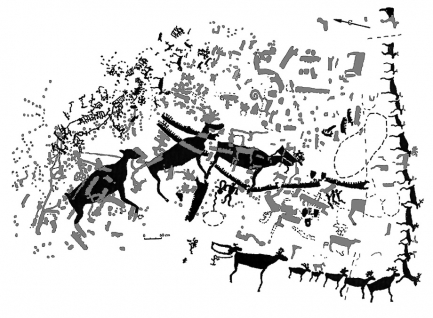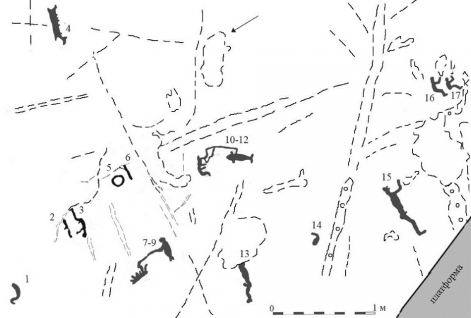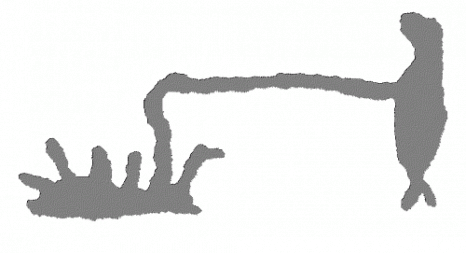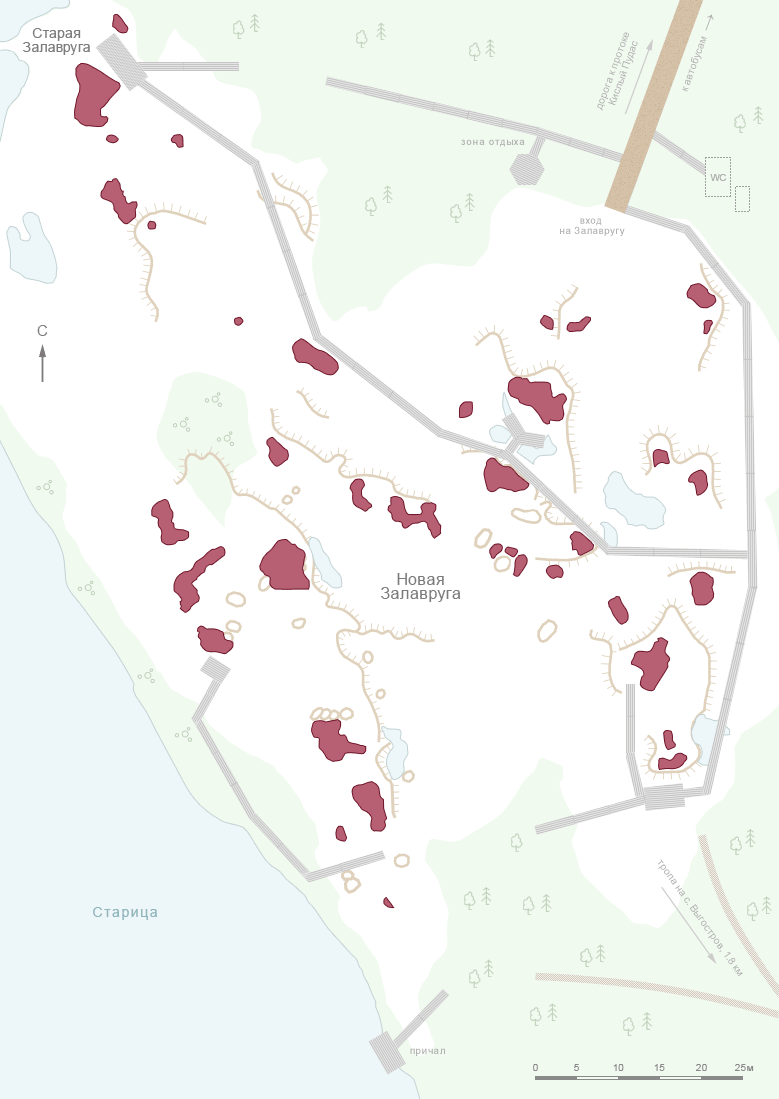Petroglyph group Ia
Back to schemeOld Zalavruga
The petroglyphs were discovered during the expedition organized by V. I. Ravdonikas on September 5, 1936 at the distance of 1.5 kilometers from the village of Vygostrov on the right flat bank of an almost run dry creek located in the west area of Bol’shoy Malinin island at 300 meters upper its influx into the Vyg River. The images cover the area of about 200 square meters. The expedition members discovered 216 single images located in three separate areas. Each of them occupies one of the rocks or their ledges (the northern rock, the central rock and the north-east slope). Currently, at least 470 engravings are registered. Old Zalavruga is among those petroglyph groups which condition is poor.Its bad condition is caused by destructive natural and anthropogenic processes such as glacial scars, numerous rock pot holes and cavities that appeared due to water and ice affection, lichen and campfires.
Scenes
The images of deer and bear traces and human being traces prevail in the petroglyph group. The number of images is 217. Boat images (70) and anthropomorphic images (about 60) rank № 2. There are about 40 images of such animals as deer, bears, white whales and seals in the group. One can see some images of bows, skis and ski sticks and such unique engravings as a spiral, a solar sign, a snake, some boat anchors and dwellings.

